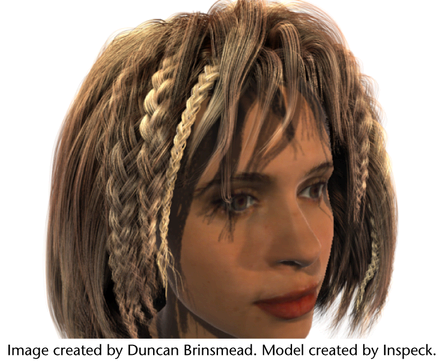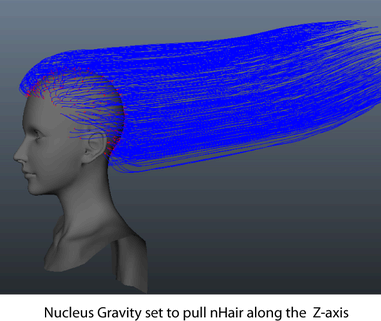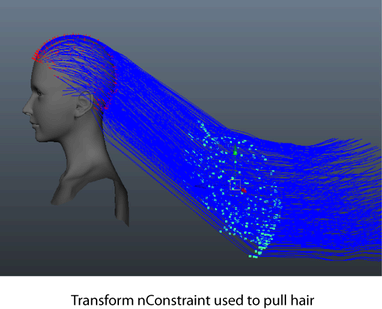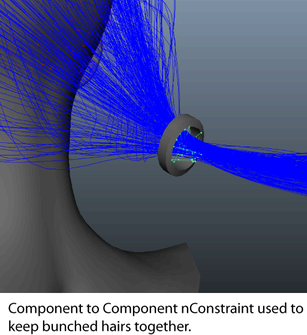
After creating nHair on an object surface, modifying and styling is the next step in generating an nHair simulation. There are a number of tools, including the Hair Scale Tool, Paint Hair Tool, dynamic forces, hair system attributes, and nConstraints, that let you create hair styles such as:
- Ponytails and pigtails
- Braided hair and dreadlocks
- Curly, wavy hair
- Streaked and multi-colored hair
- Beehive updos
In a typical workflow, modifying and styling hair for a simulation is an iterative process that may involve two or more steps. For example, you begin creating the basic hair shape and positioning it into the desired position or style. To do this you can:
- Lengthen or shorten hair (see nHair menu).
- Add more follicles or delete follicles, trim or extend hairs using the Paint Hair Tool (see Paint Hair Follicles Settings and Paint hair follicles) as well as add dynamic curves (see nHair menu).
- Edit hair curves by bending, smoothing, curling, and straightening (Edit hair curves).
- Assign a Paint Effects brush to hair to create unique looking hair effects (see Assign a Paint Effects brush to Hair).
- Use an animated passive collision object, Nucleus forces, Maya Fields, or Transform nConstraints to push, pull, or attract hair, which can act as the hand of the hair stylist (see Nucleus objects and external dynamic forces).


After achieving a basic shape or style, use nConstraints to hold the hair style in place such as in clasps and ponytails. For example, you can create:
- Transform constraints to secure styled hairs to the surface of a character's head (seeCreate an nHair Transform constraint).
- Point to Surface constraints to maintain the hair's shape and position on deforming objects, such nCloth (see Create an nHair Point to Surface constraint).
- Component to Component constraints to hold hair together in a bunch such as at the base of a ponytail. see Create nHair Component to Component constraint).

To control how the hair style reacts to forces, like Nucleus gravity, or how it collides with other Nucleus objects, such as the face, scalp, neck, or shoulders of a model, set:
- hairSystemShape node Dynamic Properties attributes, such as Stretch Resistance, Bend Resistance, Twist Resistance, or even Turbulence for simulating blow drying hair ( see Dynamics Properties).
- Collisions attributes such as Collide, Self Collide , and Collide Width Offset to adjust how nHair collides with other Nucleus objects or with itself (see Collisions).
Before rendering your nHair simulations, you can modify the look of hair, for example, curly or straight, thick or thin, use the following:
- Clump and Hair Shape attributes increasing or decreasing the number of hairs (Clump and Hair Shape).
- Displacement attributes for curl (see Displacements).
- Shading attributes for hair color (see Set up hair shading).
- Multi Streaks attributes (Paint Effects hair only) for variance in hair color and to add density (see Multi Streaks).
- Braid attribute (follicleShape) (see Braid hair).
- Set up hair self-shadowing on lights (see Set up hair self-shadowing).
For detailed workflows and suggestions for creating a variety of hairstyles, including curly, wavy hair, and braids and ponytails, see Sample hairstyles.
